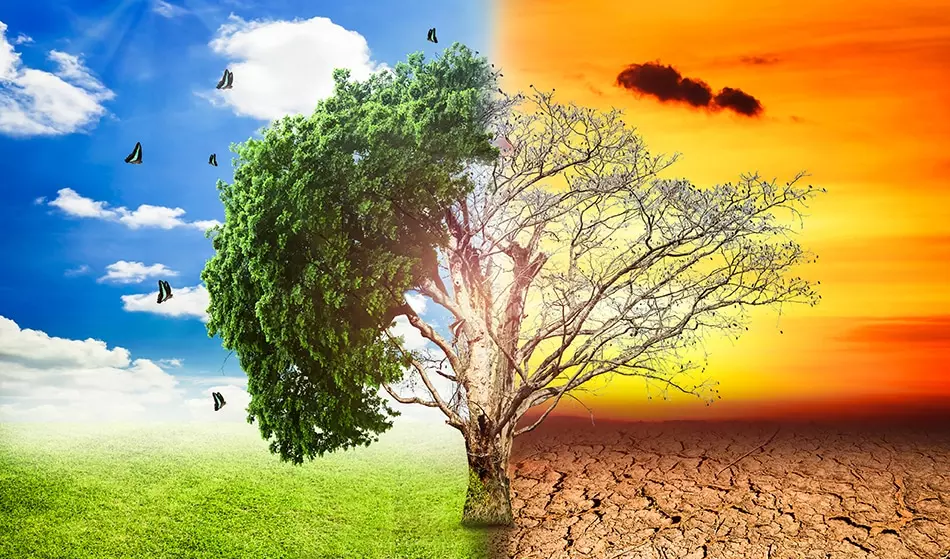
Development with focus on humanity
text_fieldsFor days on end, the fire and rescue teams had to search for the survivors and the dead bodies among the rubble of the collapsed buildings in the city of Derna, due to the flood that struck the eastern region of Libya. The government count of the number of victims of Derna was over 3,000. But the United Nations Office for Humanitarian Affairs reported that at least 11,300 people had died in the hurricane, in addition to 10,100 missing, a week after the storm struck the region. The mountainous city overlooking the Mediterranean Sea was almost completely destroyed and it also affected other neighboring cities in the east of the country. Thousands of bodies were swept away by torrents! The World Health Organization declared that it had identified 4,000 bodies! In a press conference attended by Attorney General Al-Siddiq Al-Sour and Prime Minister Osama Hammad, it was announced that the numbers are likely to increase. A horrible sight that could thaw even the hardest hearts!
Morocco, the western end of the same African continent, was shaken by a 6.8-magnitude earthquake on September 8. Tiniskt was decimated in a matter of seconds. There was no time to wash and bury the people properly. Everyone knew each of the dead. The survivors fortunately cared each other. They spent time in blue government-provided tents. It was reported that women ladled out milk porridge from communal pots for breakfast and men parceled out equal portions of donated food stuff for each family. Toddlers nestled into adults’ laps - it didn’t matter whose. Entire villages higher up in the mountains were leveled. In many, at least half of the population appears to have died! The death toll stands at nearly 3,000 people and the injured number more than 5,600 according to official estimate.The United Nations reported that roughly 300,000 people were likely affected by the earthquake. UNICEF said that the number probably included 100,000 children.
Recently, the world has witnessed a number of the worst unprecedented climate disasters. It has resulted in huge losses of property, as well as lives. Heavy rains fell in China over the course of three days, with the amount equivalent to a full year of rain, and devastated a vast area. Massive floods caused the disappearance of entire villages in Europe and caused the death of hundreds of citizens. These disasters that occur now and then raise the alarm and warn us that climate change is no longer an imminent occurrence, but has become a reality we face in our day-to-day life. It has gained a new momentum, just as no country in the world is isolated from these painful global disasters. Hence, this phenomenon calls our attention to ponder on the causes of these tragedies and the ways and means to overcome their challenges.
But, it is unfortunate that we (read our rulers and governments) are not ready to listen to scientific opinion. Intergovernmental Panel on Climate Change (IPCC) reports state that global warming is happening, it's caused by human greenhouse gas emissions, and the impacts are very bad and in some cases, catastrophic. This could be prevented only by reducing the emissions substantially. It is a message that hasn't changed much since the first IPCC report in 1990. Hundreds of scientists from Universities around the world spent years studying the pre-reviewed scientific literature - as the reports say at least 14,000 papers-on everything from cyclones to droughts. According to their observations, we must think about what needs to be done, especially as they say, if the coming years represent a fateful turning point in our battle to reduce the high degree of global warming. We have to take decisive decisions and actions to avert more devastating climate.
It is the duty of nations and societies to cooperate with each other to reduce these climate catastrophes that threaten all of humanity. Unfortunately G20 countries are emitting the equivalent of 7.4 to 7.7 tons of CO2 per capita of territorial emissions on average each year. To keep it below 1.5 degrees Celsius, they must at least halve this to between 2.9 to 3.8 tons per person by 2030 . Bold actions should tackle the climate crisis more urgently than ever. The record-breaking heat, floods, storms, drought, and wildfires that devastate communities around the world underscore the grave risks we already face.
No country can solve the climate crisis in isolation. Everyone must do his part. That is why more than 190 countries gathered in Sharm El-Sheikh, Egypt, in November 2022 for the 27th annual UN Climate Change Conference (COP27). The participants promised to quickly implement existing commitments and make the additional commitments needed to keep the 1.5 degrees C goal within reach, and advance cooperative efforts on emission reductions, adaptation, and averting, minimizing and addressing loss and damage.The United States urged all countries to gather at Sharm El-Sheikh with climate targets that meet these goals. The United States accounts for close to 15 percent of global emissions. This is far above their expected level of control. All countries – especially the world’s major economies – have to contribute their fair share to the global climate effort. Failing to keep the goal of 1.5 degrees Celsius alive will produce more extreme events such as heat waves, floods, storms, wildfires, and drought.This would significantly exacerbate global food insecurity and increase global migration. This may act as a crisis multiplier that may pose grave national security threats. If the international community fails to address climate change today, the costs of our inaction will be passed down to future generations. Our developmental schemes should keep human priority first. Fredericki Otto, director of the University of Oxford's Institute for Environmental Change, says: "The only way to truly tackle climate change is to put people first, not property, infrastructure and capital. If the criterion of success revolves around the safety and continuity of humanity, it will be easy for us to come up with winning solutions at all levels, that is, those solutions that combine adaptation and mitigation.”























